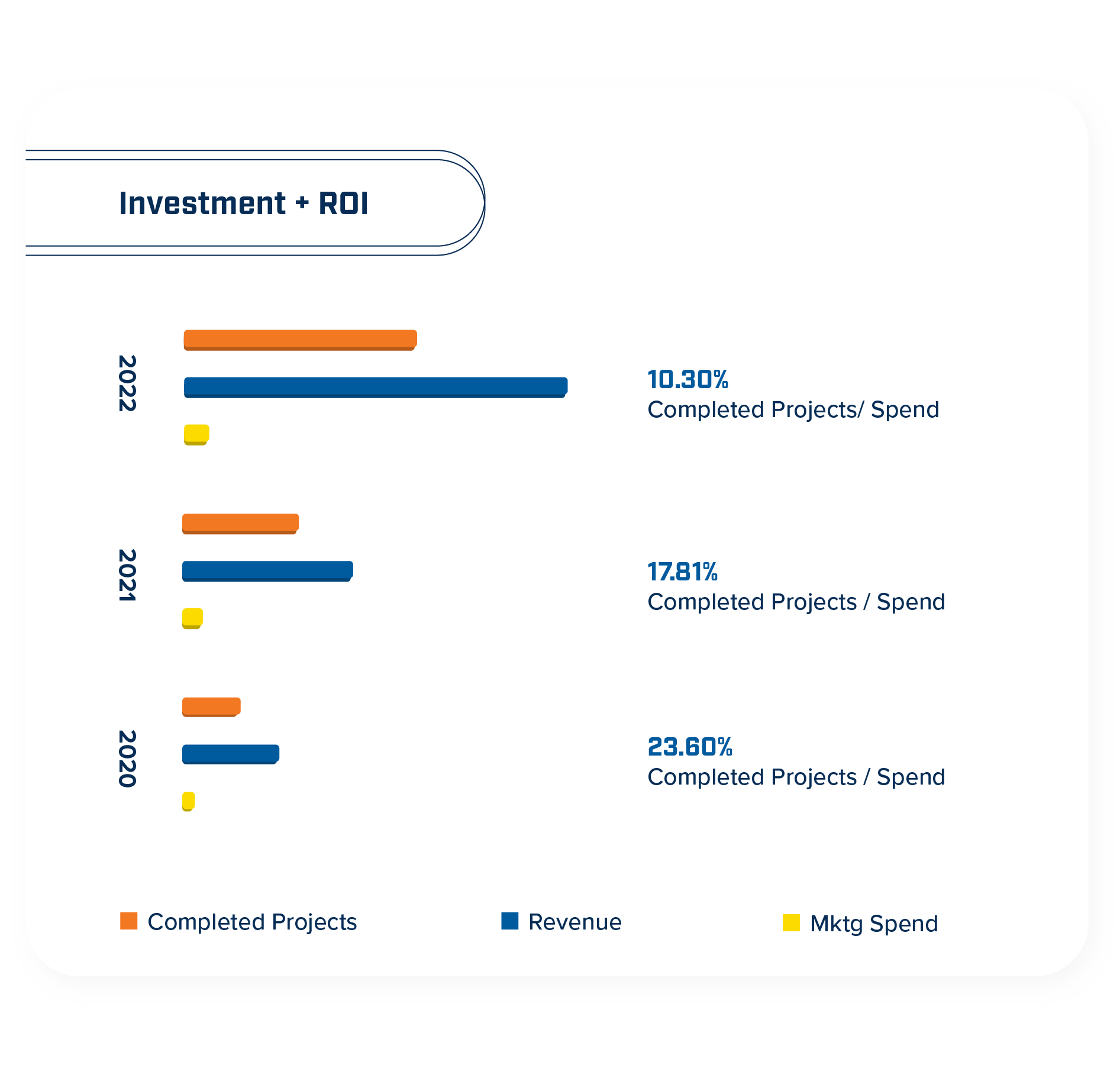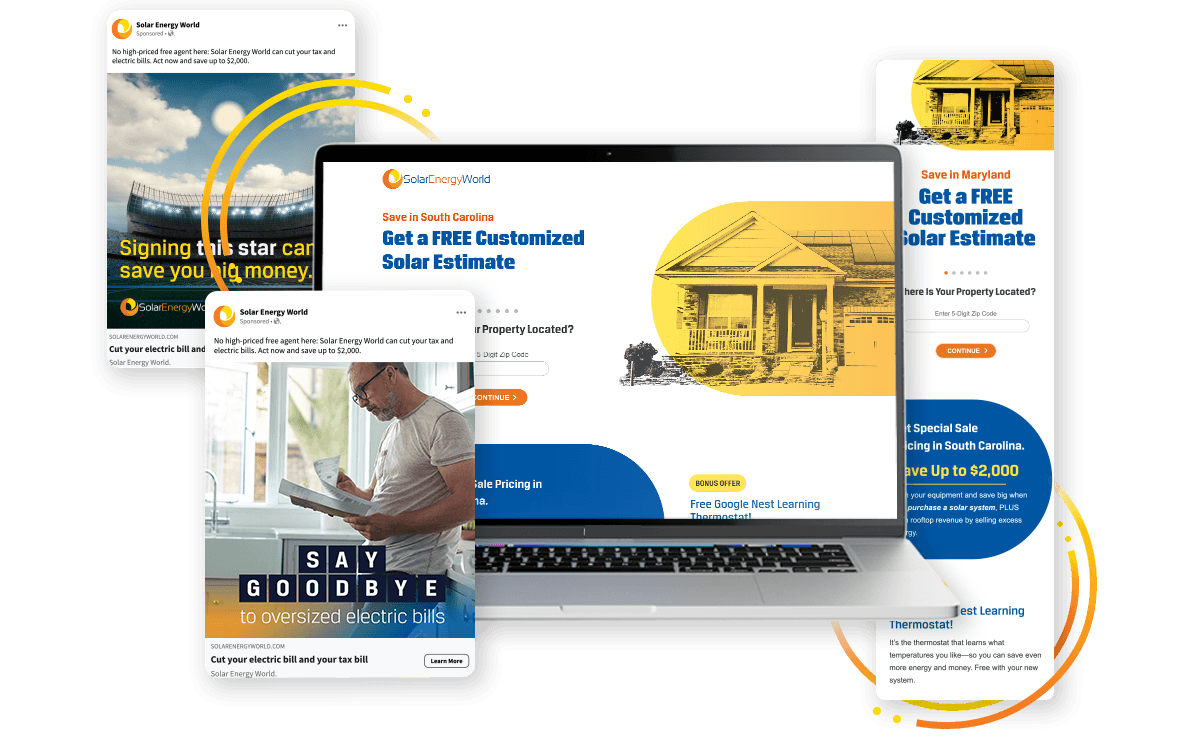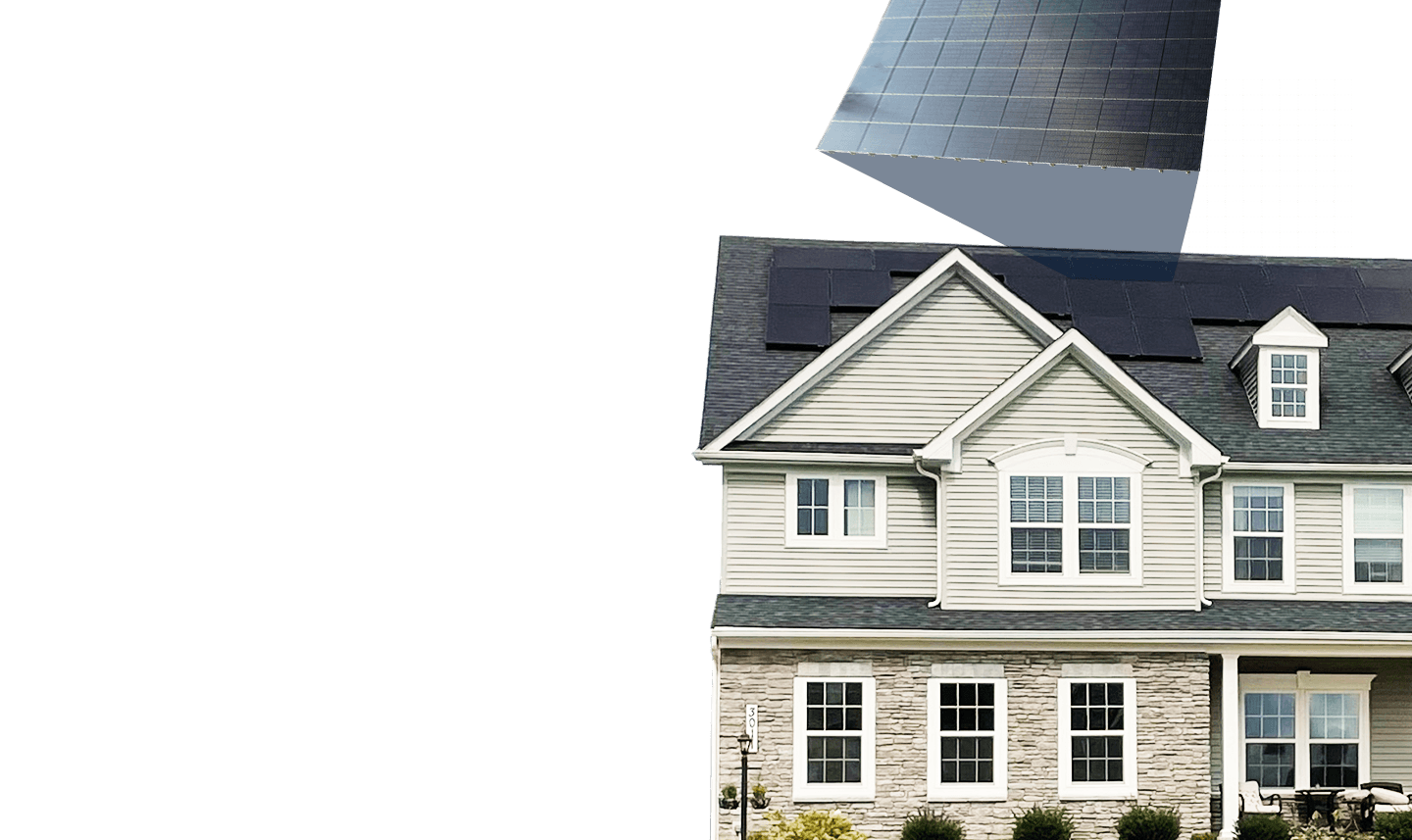
How Solar Energy World quadrupled revenue + paid less for results
- PPC, Paid Social, Conversion Optimization
- Digital Design, Copywriting
- Web Development


Solar Energy World is a leading regional solar energy installation company headquartered in Maryland. Their initial goal in 2020 was to improve lead quality, specifically their lead-to-set (appointment) rate.
They were generating a lot of leads from Google search and display, but only a very small percentage of them were converting to set appointments with homeowners. A lot of the ad dollars and creatives were focused on convincing their target markets to go solar.
Solar Energy World was also trying to make Facebook Ads a profitable and effective customer acquisition channel. But they were seeing high lead costs, poor lead quality and inconsistent results.
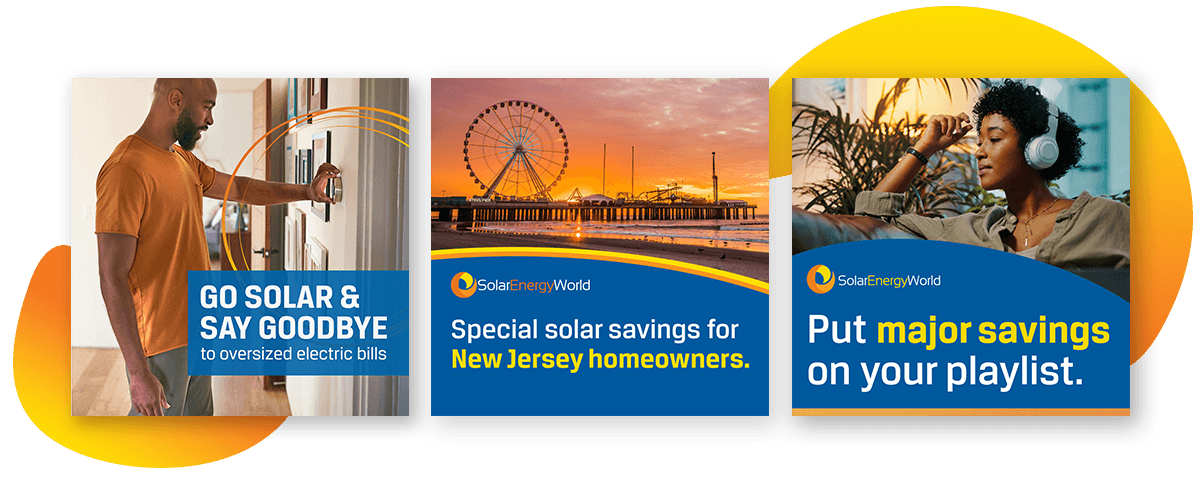
Year 1 of our engagement was all about Google Ads. We started with restructuring the account to improve performance.
We first restructured the account on improving relevance between search terms, ads, and landing pages. We did this to create a more personalized experience and reduce the friction that was preventing users from converting. Additionally, we restructured the search ads themselves to make sure we were spending as much money as possible in the markets with the best performance.
We then turned our attention to optimizing ads, landing pages and keywords in the markets with poor performance. Specifically, we found that regional-specific targeting, ads and landing pages drove much better conversion rates and lead quality. We applied these findings to the whole account for big gains.
The next big move? We turned off display ads completely. Why? Because they had a much higher cost per set appointment. Plus, we were losing search impressions due to budget and had plenty of headroom to grow to search without increasing the cost per lead or appointment.
We moved this spend to search ads where cost per set and run appointment was already better and saw an immediate performance improvement.
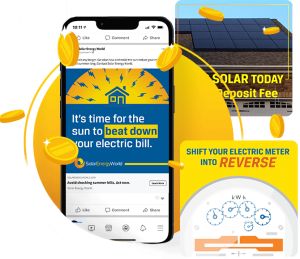
The key lesson for advertisers with a limited budget is this: let the big players pour dollars into top-of-funnel terms to educate the masses about your product category… and focus your spend on those ready to buy now.
Finally, we began to filter our leads with a “qualified” lead conversion. We would only send a signal back to the ad platform when the user self-identified as a homeowner (and not when they were a renter or a commercial business, which Solar Energy World wouldn’t service.)
In Year 2, Solar Energy World had seen enough business impact from our work on Google Ads that they entrusted us with managing their Facebook Ads as well.
As we did with Google Ads, we set up the Facebook pixel to ensure we were optimizing ONLY for qualified leads. From there, we began to build and target lookalike audiences off of qualified leads that were converting to set and run appointments.
We then restructured and consolidated the account. One of the big shifts in our strategy was to go super granular with the targeting. The campaigns were set up to target zip codes within Solar Energy World’s operating areas, while excluding bordering non-serviceable states also via zip codes.
These changes allowed us to “crack the code” on Facebook Ads for Solar Energy World. They began to scale spend in their markets, effectively creating a new, profitable stream of paying customers for the business.
On Google, we continued to innovate with a new landing page experience. We tested a multi-step form that asked the user a series of questions to both qualify them and understand their reasons for going solar. This new template converted qualified leads at a significantly higher rate, so we rolled it out across our campaigns for an immediate boost in the top and bottom line.
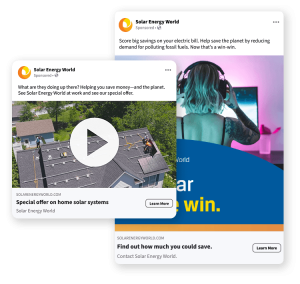
Year 3 was a year of innovation and optimization on our key channels.
On Facebook, we moved to generating value-based lookalikes. These were audiences based on Solar Energy World’s highest-value Closed Won opportunities.
We also embarked on a lot of creative testing that paid off. Specifically, we connected with prospects by using things like region / state-specific language in the ads. We also created ads based around affinity interests of our high-converting audiences to create further reach.
On Google, we focused on optimizing our campaigns to improve quality score. This lowered our average cost-per-click significantly across the board, boosting our return on ad spend. When the Inflation Reduction Act came out and the federal tax credit for solar increased from 20%-30%, we included that in our headlines and landing pages for a major lift in clickthrough and conversion rates.
In just three years, Solar Energy World was able to 4X their revenue from marketing. And their profitability increased by over 50%.
And we’re continuing to innovate with new strategies and channels to help them drive further growth.
